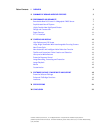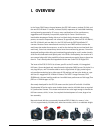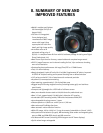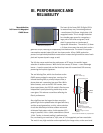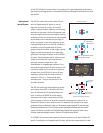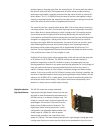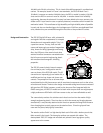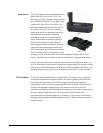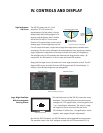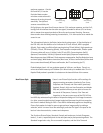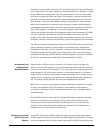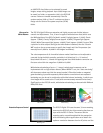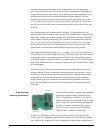
III. PERFORMANCE AND RELIABILITY 9
High
ly Durable New
High-Speed Shutter
p
revious cameras, focusing starts from the center AF point. If it cannot track the subject,
t
he other AF points will help. The Supplemental AF points enhance subject tracking
p
erformance and enable a smoother transition from the center AF point to adjacent AF
p
oints. When C.Fn-17-1, AI SERVO AF and the center AF point are set together, subject
t
racking is improved because the seven AF points within the spot metering circle will be
a
ctive: the center AF point and the six Supplemental AF points.
The center AF point has a special hybrid design. With f/2.8 or faster lenses, focusing is
a two-step process. First, the f/5.6-sensitive cross-type sensor components are used to
focus. When focus is almost achieved, a switch is made to the f/2.8-sensitive vertical
line-sensitive sensors for high-precision focusing. Additionally, the center AF point’s
f/5.6-sensitive, horizontal line-sensitive sensors each have two lines with individual pixels
arranged in a zigzag pattern, making a total of four lines for horizontal line-sensitive
focusing at the center. With this improvement, the center AF point can now do a better
job of detecting difficult-to-read, low-contrast subjects, thus improving the overall
performance of the autofocusing system. All six Supplemental AF points are f/5.6-
sensitive. The two Supplemental AF points directly above and below the center are also
f/2.8-sensitive when a lens of f/2.8 or brighter is used.
Predictive AF can focus track a subject approaching at 186 mph up to 66 feet away with
an EF 300mm f/2.8L IS USM lens. The EOS 5D camera uses the same statistical
pr
ediction computation as the EOS-1Ds Mark II camera, incorporating data of past
focusing operations. Because it can repeat more focusing operations in a short length of
time, the predictive AF control can operate effectively from the first shot, even if a
subject is moving erratically or if the subject’s movement changes just before shutter
release. (In this case, as with the EOS-1D Mark II camera, when focusing is possible, the
lens drive is executed based on the focusing result right before shutter release.) For still
subjects, too, AI SERVO AF is a useful option. Focus control is exceptionally stable; the
lens does not move, even minutely. If the subject should move unexpectedly, focus
detection is always active to enable subject tracking.
The E
OS 5D camera has a newly developed,
high-speed and highly durable shutter unit that was
designed to meet the demanding requirements of a
full-frame sensor in a relatively compact body. The
shutter is a vertical travel, focal plane type with two
parallelogram link curtains. Each curtain has four
blades, three KN Mylar and one Duralumin. The
high-torque shutter cocking mechanism, curtain
configuration and lightweight blades enable a top
shutter speed of 1/8000 sec. with all speeds
electronically controlled, and a maximum X-sync
speed of 1/200 sec. The metal shutter plate and lever, high-strength cocking gear and a
cocking motor that uses a carbon brush account for the remarkable-in-this-price-class
Shutt
er u
nit




